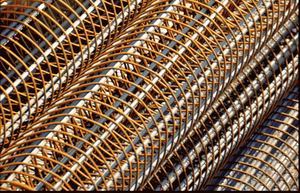The type of concrete which is pre-stressed before the application of live load to the member is called Post Tension Concrete. Its purpose is to improve the performance of concrete in service and to counteract the external stress load to a certain degree. High-strength ‘tendons’ located within the concrete slab or beam are tensioned to introduce this level of compression in them. In Reinforced Cement Concrete (RCC) Design, tensioning the steel reinforcement introduces post stress of the desired level.
Post Tension (PT) Design:
Post Tension (PT) Design is one of the building blocks of modern architecture, without which it is nearly impossible for builders to construct skyscrapers and long bridges. Post tensioning method helps devise the most economic designs as compared to RCC. But what cannot be ignored is the fact that by using the PT design method, more precautions have to be taken for shear and deflection criteria of the slabs, since carelessness in the manufacturing process may lead to disastrous results. Therefore, a skilled and experienced team of workers is one of the key requirements while making these slabs and beams.
- PT Design reduces cost as compared to RCC design for bigger and heavy loaded spans while on the other hand it is uneconomical for short spans.
- Post tensioned slabs have a lesser chance of cracking as compared to RCC slabs.
- Initial cost of post tension slab is higher due to the pre-stressing equipment and installation.
- Formwork in PT Design is easier as there are no beam drops.
- Conventional concrete pouring requires less skill while post tensioned slab pouring requires professional workers for its execution.
- Height of the storey will be less in PT Design due to no beam drop.
Conclusion
PT Design is best and relatively economical for large scale projects and structures that have longer spans and heavy loaded beams and girders. On the contrary, RCC design is economical for small scale projects. However, skilled labour is required for post tensioned slab and beam execution.
References
- Design of Pre-stressed Concrete Structures (Third edition) by T. Y. Lin and A. P. Burns Introduction to Pre-stressed Concrete by Nadeem Hassoun
- A Review on External Pre-stressing in Concrete by Harpreet Kaur and Dr Jaspal Singh

